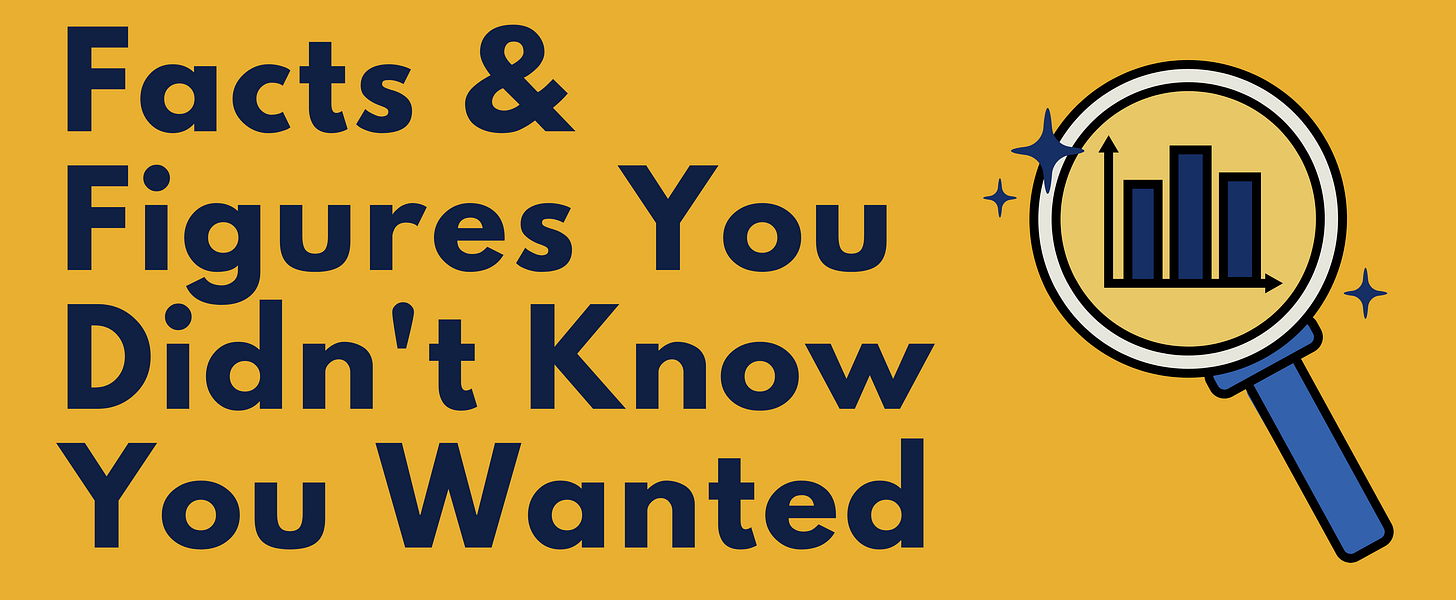The Surprising Economics of Love Island
It may look like just another reality dating show, but here's what an economist sees when a new bombshell enters the villa.
You’re reading Monday Morning Economist, a free weekly newsletter that explores the economics behind pop culture and current events. Each issue reaches thousands of readers who want to understand the world a little differently. If you enjoy this post, you can support the newsletter by sharing it or by becoming a paid subscriber to help it grow:
For those already rolling their eyes at the prospect of analyzing reality TV this week, I have a confession: I was a skeptic, too. I didn’t plan to spend my weekend watching Love Island USA.
After seeing #LoveIsland take over my social media feeds for the past two weeks, I figured I’d watch an episode to see what all the fuss was about. One turned into two, then three, and before I knew it, I was hooked.
It wasn’t because of the scandals or the slow-motion makeout scenes. It was the economics, of course! That’s just the way it makes me feel, I guess.
Don’t worry, I’m not here to convince you to watch the show. I’ll walk you through the premise and give you everything you need to understand the economics, no streaming subscription required. But if you are a little curious, Love Island USA streams on Peacock, and the UK version streams on Hulu in the United States.
And just a heads-up: there will be spoilers ahead. So if you’re planning to watch with fresh eyes, consider this your official “I got a text!” warning.
So What Is Love Island?
If you’ve never heard of the show, here’s the basic premise: A group of single men and women (referred to on the show as “islanders”) live together in a secluded villa, completely cut off from the outside world. The U.S. version is happening in Fiji, while the British version takes place in Mallorca, Spain. Yes, there are two entirely separate series running at approximately the same time, with the same general format. Now, keep up!
To stay on the show, islanders must “couple up” with someone, anyone. That pairing can be romantic, tactical, or just temporary, but islanders are sent home if they’re left single at a recoupling ceremony. New islanders arrive every few days to shake things up, and the viewing public can vote on who stays, who dates, and (eventually) which couple wins the $100,000 (or £50,000) prize.
If you’re a fan of reality TV, it’s Big Brother meets The Bachelor, but set in a villa. There’s also a lot more swimwear and a lot less structure. If dating shows aren’t really your thing, I probably haven’t changed your mind. But if you’ve made it this far, you might be wondering what an economist is doing watching all the drama unfold by a fire pit.
Beneath the villa vibes and slow-motion pool shots, there’s a surprising amount of economics happening. But before we get to how that all plays out in the villa, let’s start with the economic theory that sets the stage.
A Pair of Bombshell Economists Have Entered the Villa
If you’ve watched the show, you know what happens when new islanders walk in. It’s time for two bombshells to enter our story. Instead of tan lines and charm, they bring with them their famous algorithm. They aren’t islanders, they’re economists. Their names? David Gale and Lloyd Shapley.
They didn’t show up in Fiji or Mallorca. Instead, they appeared in a 1962 academic paper that would eventually reshape everything from school admissions to dating apps. Their goal was to answer a deceptively simple question with far-reaching implications: How do you pair people up so that no one wants to trade partners?
They called it the stable marriage problem. Imagine two groups (traditionally framed as men and women), each with their own ranked list of preferences for members of the other group. The goal is to form couples so that no two people in the wider group would both prefer to be with each other instead of the person they’re partnered with. If two people would rather be with each other than their partners, their matches are unstable.

To solve the instability problem, our economists proposed what’s now known as the deferred acceptance algorithm. One group makes offers based on their preferences, and the other group tentatively accepts the best offer they’ve received so far. The process repeats (offers, acceptances, rejections) until no one wants to switch. The final result is a set of pairings where no two people would both prefer to be with each other instead of their assigned partners.
This idea became the foundation for what economists now call matching theory, a field that has helped design real-world systems like school placements, job markets, and organ donation networks. It’s not the kind of thing that usually gets a primetime slot, but it did earn Shapley (alongside Al Roth) a Nobel Prize in economics.
So what does any of this have to do with a reality show filled with villa flirtations and late-night recouplings?
Let’s see how it plays out in the villa.
How Love Island Matches Actually Work
In the very first episode, Love Island kicks off with a round of quick couplings after their first introductions. Islanders are forced to make snap decisions based on first impressions. There’s not much time, and even less information. But like in the matching model, those initial pairings aren’t expected to be their final matches.
As the days go on, islanders spend more time getting to know each other and reevaluating their preferences. Every few days, a recoupling allows islanders to stick with their partners or switch it up. It’s an iterative process. Preferences can change, and new options arrive in the villa.
When Cierra entered the villa on Day 2, the men were forced to ask themselves if she was a better match than the person they were already coupled with. Several of them would go on to say she was, but Cierra would choose Nic to couple up with, leaving Nic’s previous partner at risk for elimination.
Eventually, the guys talked openly about the importance of exploring all their options before locking anything in. It was a near-perfect nod to the matching algorithm’s logic. You can’t make an informed ranking until you’ve seen the full set of possibilities.
Of course, that’s where Love Island starts to drift from the model.
Stability Doesn’t Make Good Reality Television
A match is considered stable when no two people would both prefer to be with each other instead of their current partners. The Gale-Shapley model assumes this kind of stability is possible, but only under some pretty specific conditions: everyone knows their preferences, the group is fixed, and everyone is trying to make the best match.
Love Island breaks all of those, on purpose.
Information is often incomplete, which can make it hard for contestants to be able to fully rank their options. For example, Huda kept a major detail from the men early on: she’s a mommy. Her strategy was to wait until someone had already fallen for her before sharing that information. When she eventually told her first partner, it backfired. When she told another, his reaction went viral. It’s hard to rank potential matches when you don’t have all the facts.
The group size isn’t fixed either. The season might start with 10 islanders, but more than 30 could pass through the villa by the end. Every new arrival forces everyone to mentally reshuffle their rankings. It’s not something the original model wasn’t designed to handle.
And the incentives? Only one couple wins. The rest leave with whatever they’ve built on their show, romantic or otherwise. That means some islanders may be playing a long game that has nothing to do with finding “the one” and everything to do with brand deals, screen time, or life after the villa.
From a matching perspective, Love Island is messy. But that’s exactly what makes it interesting for TV audiences. It’s a live experiment in uncertainty and incomplete information. It’s still economics, just not the stable kind.
Final Thoughts
The Gale-Shapley algorithm powers real-world systems that match students to schools, doctors to hospitals, and donors to patients. But you don’t need an economics degree to see matching in action.
Sometimes, economics turns up where you least expect it, like a luxury villa in Fiji or Mallorca. The latter version comes with sun, drama, and emotionally charged tension. You don’t need to binge-watch a dozen episodes to appreciate the economics at play. But if you do, at least you’ll see it from a whole new angle.
⚡️ Liked the Love Island post? Forward it to a friend, post about it on your favorite subreddit, or drop a link in your family group chat or Facebook group. Refer 3 friends and earn a shoutout in a future newsletter.
Ahead of last year’s season finale, Love Island USA was the #1 reality series in the U.S. across streaming platforms [NBC Universal]
The show is captured through 80 to 90 cameras installed around the villa, and a crew of 450 producers, editors, and postproduction executives make decisions about what footage viewers see [The New York Times]
From June 6 to 12, the US season racked up 1.2 billion minutes viewed across nine available episodes, which is a 244% increase over the previous week’s first few episodes [Deadline]
The islanders don’t have access to clocks or watches, so they never really know what time it is [The Independent]






One reason I pursued economics was when I learned economists were behind the algorithms for Match.com; Gale-Shapley algorithm. This truly depicts economic theories and how not having all the information affects decision making; how fascinating to see how people decide with the limited information available, but also how we all think and strategize.
I think we can all agree the show would be much more interesting if Gale and Shapley were actually on it. I know what you're going to say: "they're both dead." I stand by my comment.
A longer-form explanation of the algorithm as applied to the show, with a couple of example rounds drawn out (this helped my understanding): https://www.scientificamerican.com/article/the-stable-marriage-problem-solution-underpins-dating-apps-and-school/
Numberphile on the stable marriage problem: https://www.youtube.com/watch?v=Qcv1IqHWAzg